
|
Astronomy Picture Of the Day (APOD)
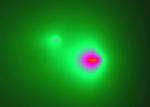 Another Comet LINEAR Breaks Up
Another Comet LINEAR Breaks Up
21.05.2001
Last year, a different comet LINEAR (C/1999 S4) broke up. This year, a comet first imaged by the Lincoln Near Asteroid Research (LINEAR) telescope in New Mexico on 2001 January 3, is also breaking up.
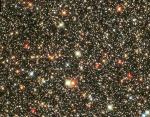 Sagittarius Star Cloud
Sagittarius Star Cloud
20.05.2001
Stars come in all different colors. The color of a star indicates its surface temperature, an important property used to assign each star a spectral type. Most stars in the above Sagittarius Star Cloud are orange or red and relatively faint, as our Sun would appear.
 Damage to Apollo 13
Damage to Apollo 13
19.05.2001
In April of 1970, after an oxygen tank exploded and crippled their service module, the Apollo 13 astronauts were forced to abandon plans to make the third human lunar landing. The extent...
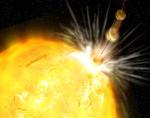 HD 82943: Planet Swallower
HD 82943: Planet Swallower
18.05.2001
Stars like HD 82943 are main sequence G dwarf stars with temperatures and compositions similar to the Sun. Also like the Sun, HD 82943 is known to have at least two giant planets, but unlike gas giants in our solar system their orbits are not nearly circular and bring them closer to the parent star.
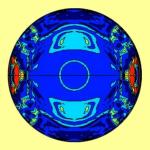 Solar Neutrino Astronomy
Solar Neutrino Astronomy
17.05.2001
Neutrinos are subatomic particles generated by the nuclear reactions which power stars like our Sun. Flying outward from the Sun's core, they easily pass through the Sun (and almost anything else!) unimpeded and should be detectable by earth-based neutrino "telescopes".
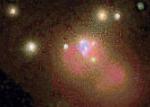 The Center of the Circinus Galaxy in X Rays
The Center of the Circinus Galaxy in X Rays
16.05.2001
Are black holes the cause of X-rays that pour out from the center of the Circinus galaxy? A new high-resolution image from the orbiting Chandra X-ray Observatory has resolved the inner regions of this nearby galaxy into several smaller sources. The image is shown above in representative-color.
 A Radar Image of Venus
A Radar Image of Venus
15.05.2001
The largest radio telescopes in the world are working together to create a new map of the surface of Venus. The surface of Venus is unusually hidden by a thick atmosphere of mostly carbon dioxide gas. These thick clouds are transparent, however, to radar signals sent and received from Earth.
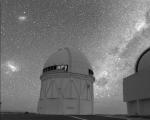 A Cerro Tololo Sky
A Cerro Tololo Sky
14.05.2001
High atop a Chilean mountain lies one of the premier observatories of the southern sky: Cerro Tololo. Pictured above is one of the premier telescopes of the Cerro Tololo Inter-American Observatory (CTIO) and of the past quarter-century: the 4-meter Blanco Telescope.
 Crater Copernicus
Crater Copernicus
13.05.2001
One of the more prominent craters on the Moon is named Copernicus. Copernicus is a large young crater visible with binoculars slightly northwest of the center of the Moon's Earth-facing hemisphere. Copernicus is distinguished by its size and by the many bright rays pointing out from it.
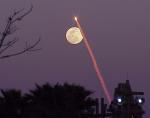 Shuttle Moon
Shuttle Moon
12.05.2001
As a gorgeous full Moon rose above the eastern horizon on February 7, the Space Shuttle Atlantis streaked skyward towards an orbital rendezvous with the International Space Station. Watching from Orlando, Florida, about...
|
January February March April May June July August September October November December |
|||||||||||||||||||||||||||||||||||||||||||||||||